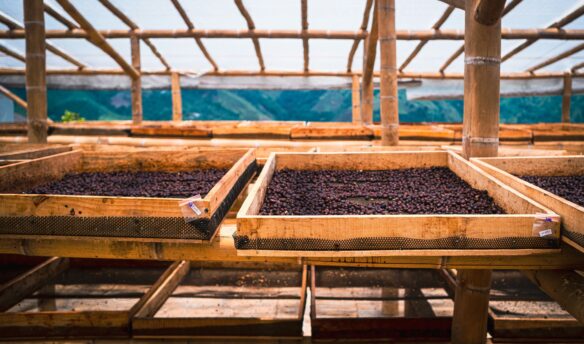✉️ This story was featured in this week’s Coffee News Club
👋 Get the Coffee News Club newsletter in your inbox weekly—sign up.
Once relegated to low-cost blends and jars of instant coffee, Coffea Canephora, usually referred to as robusta, has grown in popularity in recent years. Even the specialty coffee industry—which has often dismissed robusta as inferior in taste to arabica—is beginning to embrace it, thanks to farmers and researchers working to improve robusta’s flavor.
While robusta makes up 44% of all coffee grown, it still lags behind arabica in terms of attention to sensory analysis. For example, there’s a whole language that evaluators and growers use to talk about arabica and tools they use to judge and discern its quality. Robusta has its own grading system, but until now, it hasn’t had a separate flavor wheel to help with sensory evaluation.
To tackle this, a team of researchers from Brazil have created a flavor wheel specific to C. canephora. As described in a new paper published in the journal Scientific Reports, the goal of the new wheel is to standardize aroma and flavor descriptors so farmers and researchers can continue improving robusta’s quality.
Researchers recruited 49 professional coffee graders from Brazil and Switzerland to create the wheel, who evaluated 67 samples from 13 different countries across three cupping sessions. The evaluators came up with over 200 flavor descriptors during the first cupping session, which were whittled down over the following sessions to create the final wheel.
Like the comparable arabica flavor wheel produced by the Specialty Coffee Association, the new robusta wheel features an inner circle of broad flavor categories that stem out into more specific notes. For example, the fruity subsection includes categories like tropical fruit and berry, which are then broken down into more specific flavor descriptors like banana, star fruit, raspberry, and strawberry.
The authors acknowledge there’s overlap between the arabica flavor wheel and their robusta wheel but also note differences: “Particularly, the descriptors tomato, fermented soy sauce (shoyu), coconut water, and mushroom were included under the category ‘umami’, and seems to be unique to C. canephora.”
More research is needed to explore these differences further, the authors write. They also advocate for more increased use of robusta on high-profile stages such as the World Coffee Championships, which would be “a crucial step to highlighting C. canephora in the specialty coffee arena and leverage quality.”
Read the full story on the first robusta flavor wheel from Sprudge here.
















